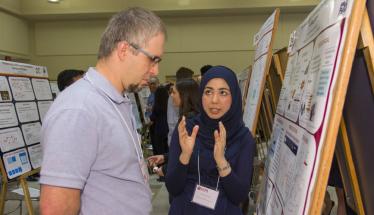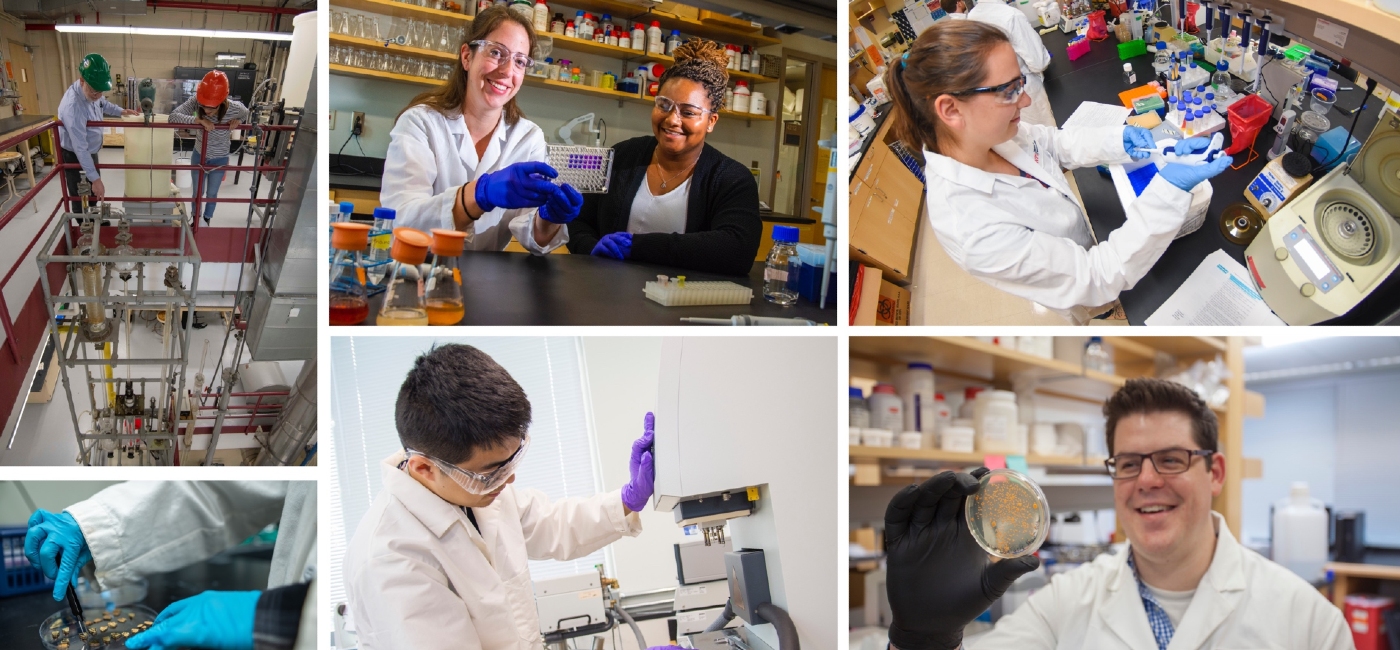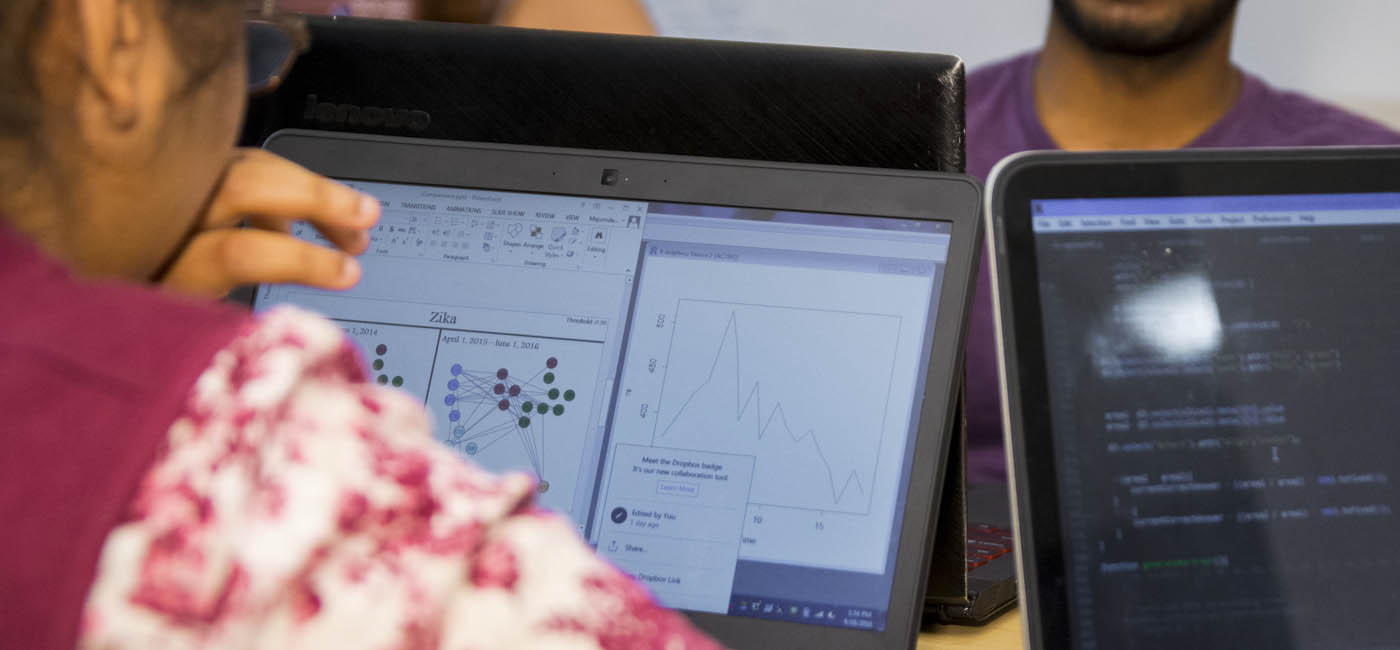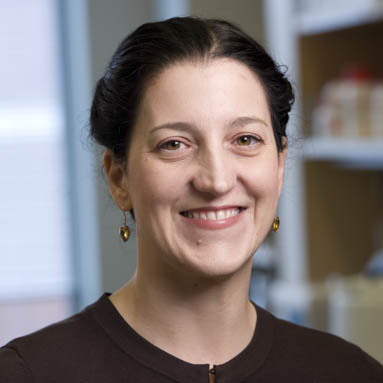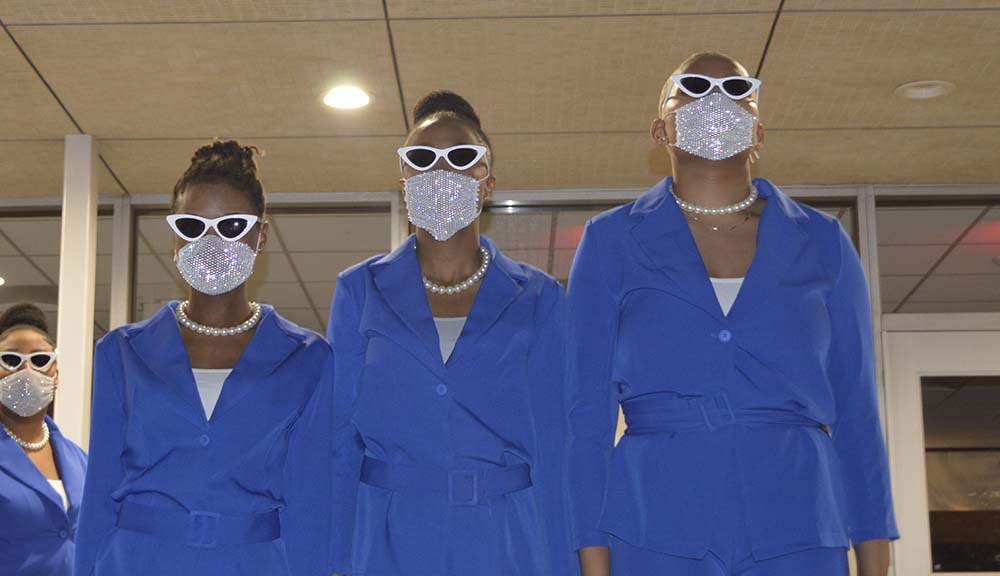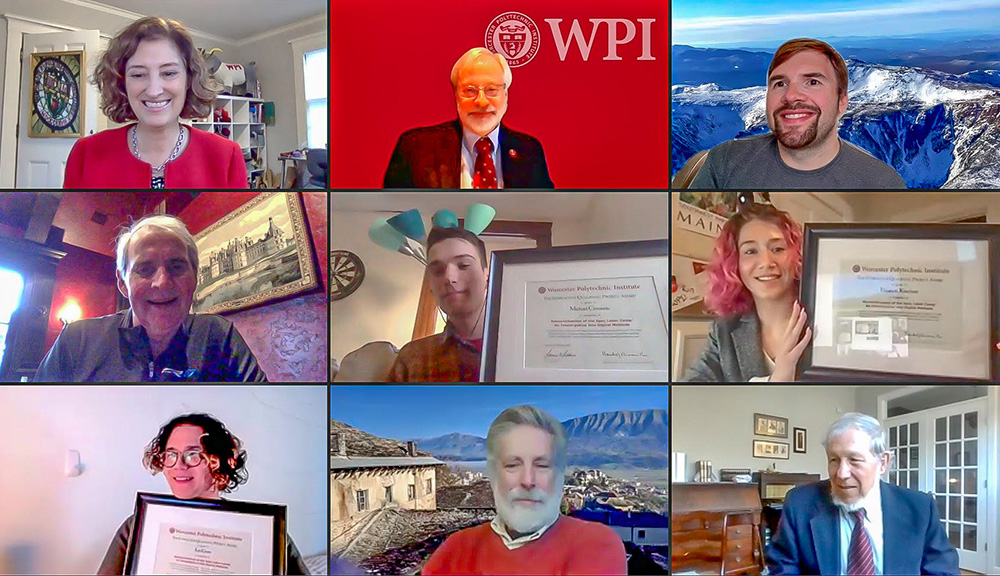On April 11, graduate students presented their latest research at the annual Graduate Research Innovation Exchange and the Investing in Ideas with Impact (i3) competition. The events celebrate graduate-level research and highlight the important, and intricate work students are doing.
“I love seeing the diversity at these events,” says Terri Camesano, dean of graduate studies and professor of chemical engineering. “I find research I didn’t even know we were doing on campus.”
The two events are distinct, but both are sponsored by the Dean of Graduate Studies and the Office of the Provost. GRIE is a two-hour poster presentation event during which up to 60 judges (and countless WPI community members) walk informally throughout the Rubin Campus Center Odeum and ask questions about the presentations and engage students in discussion.
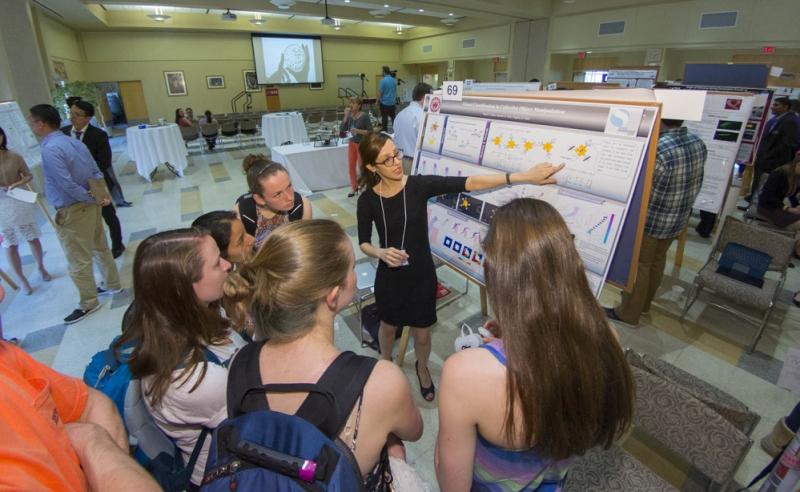
A student presents her work.
The i3 structure is more formal. Participants, about 12 this year, present after progressing through both program or department selection rounds and elimination rounds by the deans of Arts and Sciences, Foisie Business School, and Engineering.
Participants give three-minute verbal presentations to a panel of expert judges without any slides, posters, or other props. The presentations are done in a manner that would be used to convince potential funders to invest in their products, and students compete for certificates, potential cash prizes, and the people’s choice award based on audience votes.
This year’s i3 judges include Ernest “Ernie” Cormier ’81, angel investor; Henry Fitzgerald ’75, entrepreneur and past vice president of Genzyme; Nancy Gray ’16, president and CEO, Gordon Research Conferences; Maureen Horgan ’83, retired partner, Accenture; Jason Macari ’84, president, Macari Development; Jim Mayer ’77, senior vice president, TRC Companies; Richard Resnick ’98, technology executive; and Jason Syversen ’01, president, Siege Technologies.
The i3 presenters are at varying stages of development. “Some projects have clear industrial applications, and it’s easy to talk about translating them to industry,” says Camesano. “Others have a fundamental project or they are narrowing the focus.”
Qualified students who participate in i3 each year find the experience valuable. “We see some students participate in i3 more than once and we see them develop over time,” says Camesano. “They learn how to apply for i3, how to get potential customers, and the steps they need to take to de-risk before industry can take this on.”
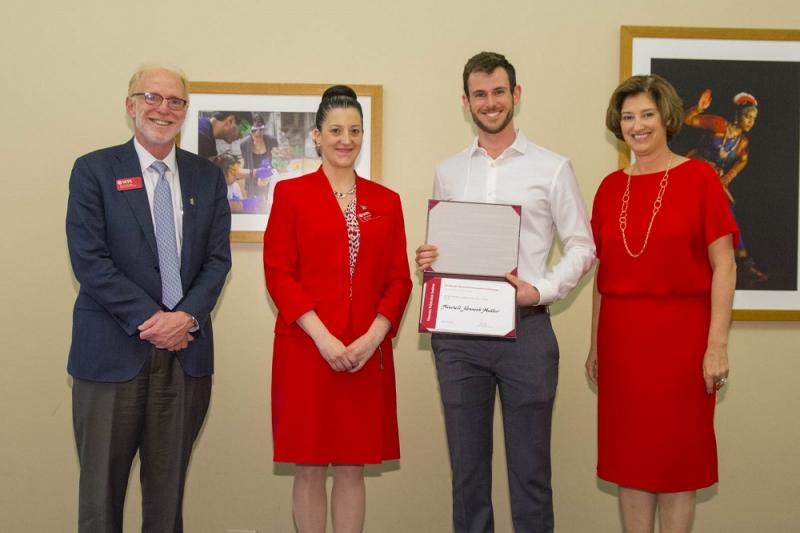
Mitchell Muller accepts his award.
Students who participate in i3 might have an idea of how technology can help a real product or they might already be at the point where they have filed a disclosure agreement and are in the process of getting a patent. “To get to that stage, students have to talk to potential customers, insurance companies, patients, the FDA, users of the technology,” says Camesano. “They are far from the final answer, but understanding of what it would take,” says Camesano.
One of two i3 winners, Mitchell Muller, an MS candidate in robotics engineering, is a first-time i3 participant. While his presentation, “Gyroscopic Shoulder Prosthesis to Dynamically Assist Arm Amputees During Movement,” is commercially appealing, he says preparing for the i3 helps him take a broader look at his potential product.
His bachelor’s degree work gave him research skills and his postgraduate work in commercial business exposed him to industry expectations and even to the risk benefits in a start-up. The i3 brings it all together. “The i3 research adds a little of that start-up perspective," he says, "—what’s going to work when the rubber hits the road?”
But even if the students have no intention of starting a business or inventing a product, the i3 process is excellent preparation for any career role, says Camesano. “You have to have the entrepreneurial mindset,” she says, and going through the process for an i3 presentation helps foster that global approach to a project. Participating more than once helps students gain insight that’s just not possible in the early stages of a project. “Sometimes, it takes time to see it,” she says. “And you see their confidence improve.”
Muller agrees. As a presenter, he has to make sure he highlights his marketable product, but he also has to capture the attention of someone who might not have thought of investing at all. “This puts you in a different space,” he says. “You have to figure out who wants this, how it will work, and what do I need to do.” An effective presentation is one that informs both the expert in the field and the person who has no knowledge of the field at all.
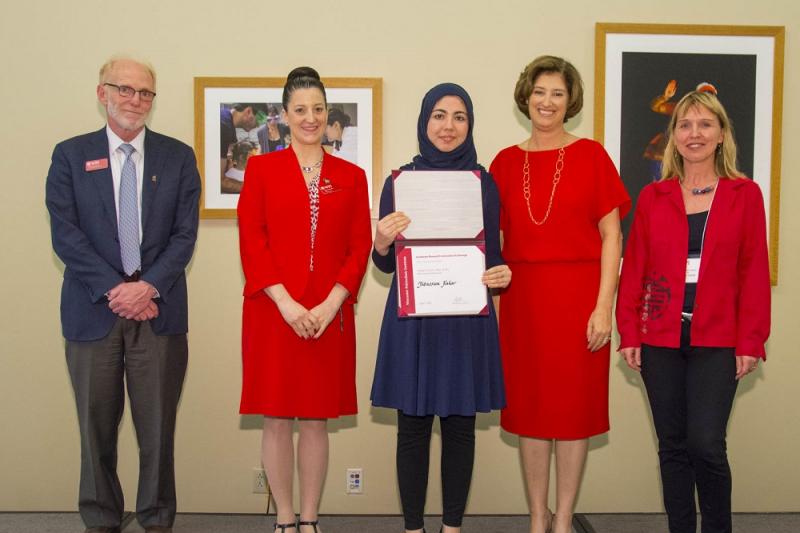
Tabassum Kakar accepts her award.
Like i3, GRIE is in stages. Part 1 is held in February, and this year approximately 180 students presented. From that field, 68 were selected to present at Part 2. Students give their presentations in a marketplace-style setting. More informal and interactive than the i3, the GRIE event allows the students to not only answer questions, but also to ask questions of audience members and of each other.
Tabassum Kakar, a PhD candidate who placed third in the data science category, presented “DDI-Viz: A Visual Analytics Tool for Exploring Drug-Drug Interaction.” Kakar says seeing a year’s worth of research compiled into one clear poster is appealing to her, as it lets her see all of her work in a new way. After meticulously uncovering and tracking previously unknown and potentially fatal adverse drug interactions, a poster helps distill her efforts. And in an environment like GRIE, she’s able to tailor her presentation. “Everyone has different levels of interest,” she says. “We can come to their level of understanding.” And as a scientist, it’s eye-opening, she says. “It’s good to look around and see what other people are working on.”
Each poster presentation gets judged three or four times by the judges during the few hours of the event. Awards are given in the following categories: arts and sciences; business and social sciences; engineering; life sciences and bioengineering; robotics and cyberphysical systems; and data science and cybersecurity. Students compete for placement, cash prizes, and the People’s Choice Award, which is voted on by audience members.
“That back and forth is really valuable for the poster presentations,” says Camesano. And the entire WPI community has a chance to participate, celebrating the research and meeting the researchers behind the work.
- By Julia Quinn-Szcesuil
